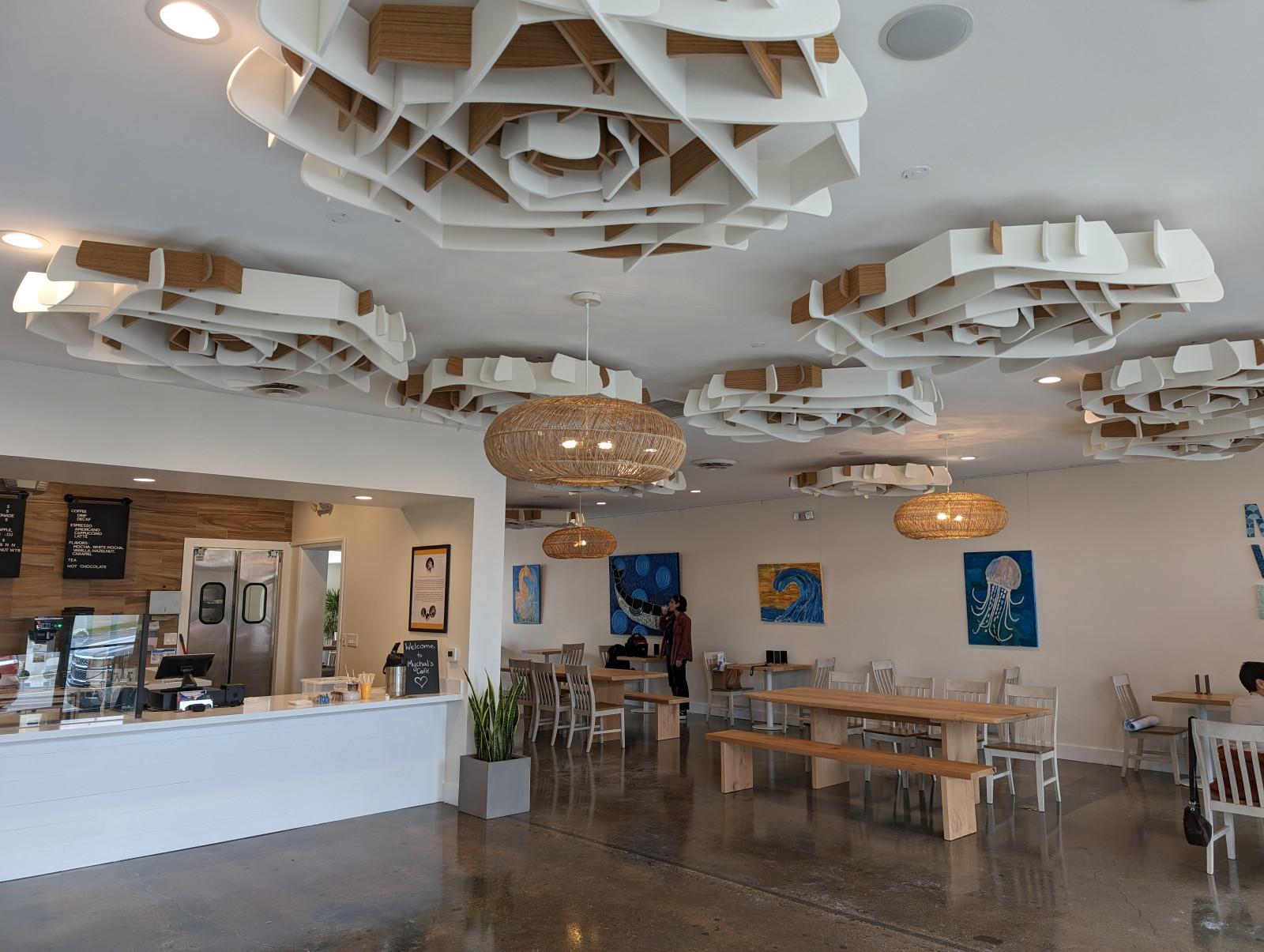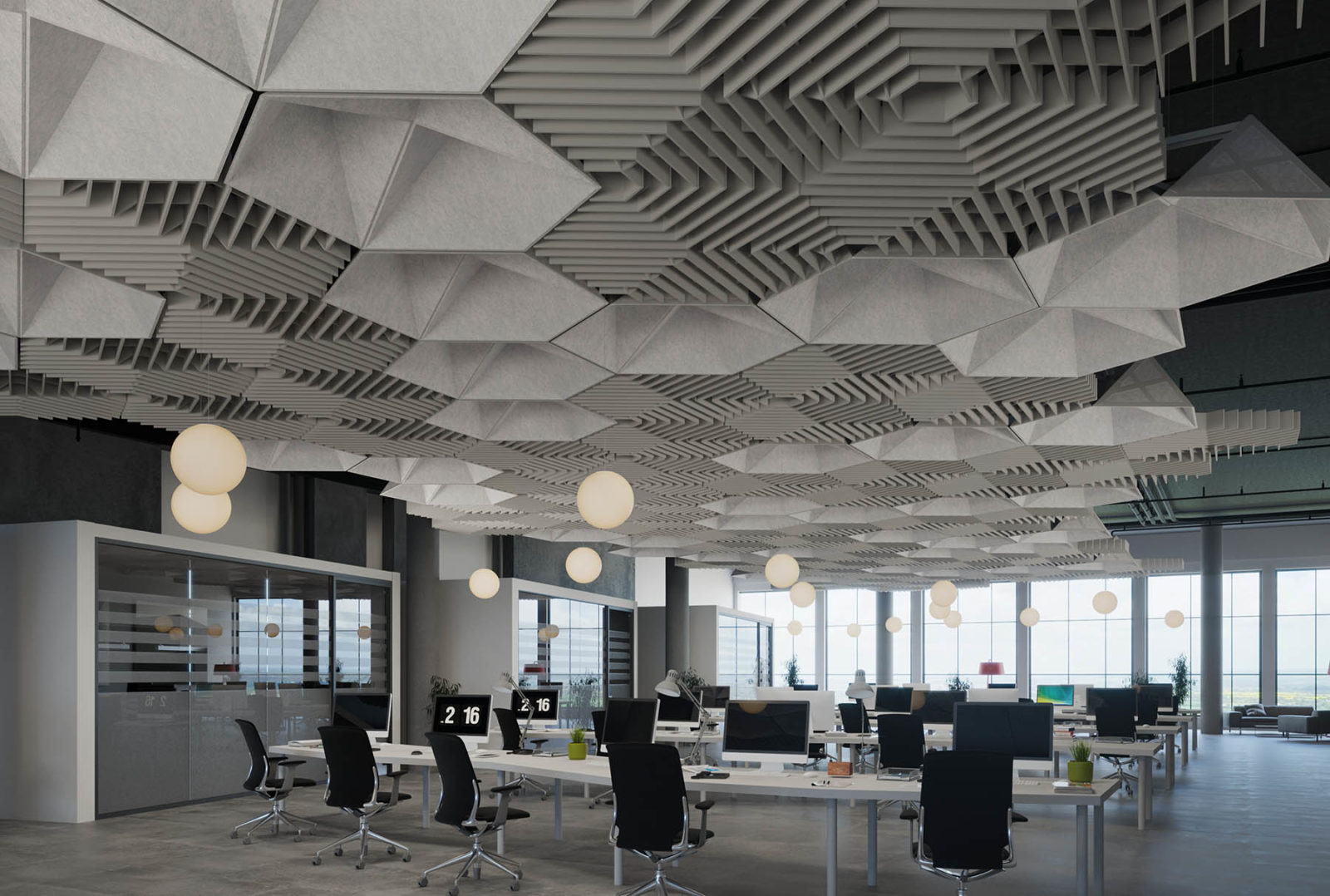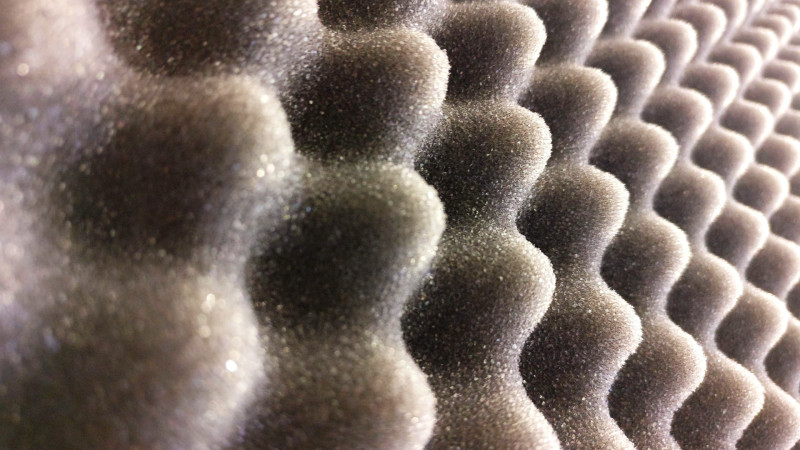Have you ever been in a noisy restaurant where you couldn’t hear the person sitting across from you, or been to a train station where the sound was so overwhelming it felt like it was shaking the platform? These experiences are a direct result of poor sound control.
There is no escaping sound in the workplace or public spaces. From the quietest spaces you can think of, say a library or bookstore, to more fast-paced environments like restaurants and airports, noise is all around us. More than just a common annoyance, excess sound can harm your health.
Short-term issues like elevated stress levels, irritability, and difficulty concentrating can cause a bad day whether you’re at work, traveling, or running errands. Over an extended period, these issues can add up to long-term hearing damage, disrupted sleeping patterns, and chronic stress.
Acoustic Solutions
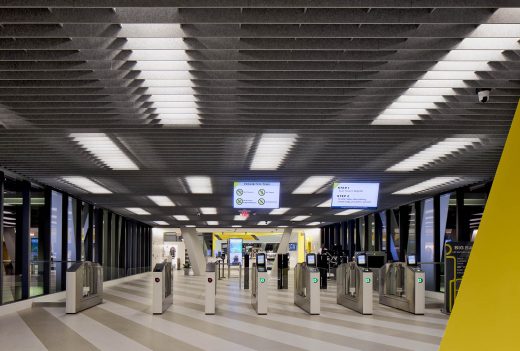
“All Aboard” West Palm Beach, FL, Zyscovich Architects. Photo by Steven Brooke Studios.
Any space with elevated noise levels can benefit from acoustic attenuation. This solution can relieve employees, travelers, and visitors, creating a more relaxed and productive environment.
While the terms “soundproofing” and “sound absorbing” are often used interchangeably, they represent two distinct concepts with important implications for your business or public space.
In this blog post, we’ll dive deep into the differences between these two terms and explore how they can help you create a more peaceful and enjoyable environment.
Soundproofing
When it comes to cutting through the noise and reducing excess sound, the most common strategy you may be familiar with is “Soundproofing.” From headphones to ear plugs to privacy-focused work booths, “Soundproof” has become a consumer-targeted phrase that makes people think it’s the only way to eliminate noise.
However, soundproofing is more intensive, invasive, and costly than other attenuation methods. As a definition, soundproofing is the process of blocking all sound from entering or leaving a space. This can be ideal for locations such as music studios, movie theaters, or somewhere with sound-sensitive equipment.
This process is done with a combination of heavy materials and dense building materials like walls and ceilings, in concert with isolating spaces to create air gaps between layers, reducing sound transmission.
But sometimes, too much soundproofing can be an issue. In most use cases, you still want some level of noise to be heard and transmitted clearly. While too much noise in the wrong setting creates distractions, it is key that the sound you want to be heard gets received clearly. That is where “Sound Absorption” comes in.
Sound Absorbing Acoustics
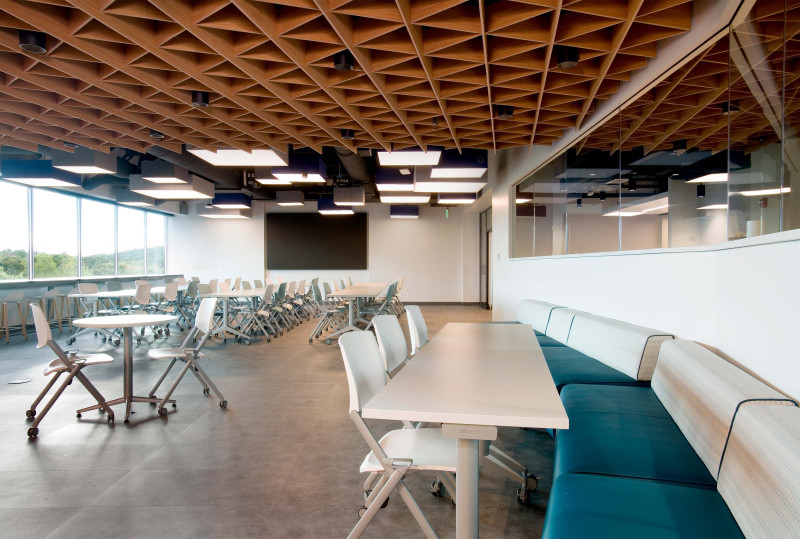
“Translate Bio” Waltham, MA, Olson + Lewis Architects. Photo by Shelly Harrison.
A more common and cost-effective way to deal with unwanted noise is by installing sound-absorbing materials. Sound absorption aims to enhance the acoustic quality in a space by reducing echo and reverberation. This goal is achieved using light, porous materials to trap and convert sound waves.
This can be accomplished through sound-absorbing materials and furnishings such as rugs, curtains, furniture, or other soft fabrics. Sound waves reach these porous materials and are transferred into different forms of energy, such as heat. The room’s echo and reverberation are significantly reduced, resulting in a much quieter environment. Excess noise is minimized, allowing the desired sound to come through clearly.
For more concentrated sound absorption, acoustic treatments, like those from Arktura, can provide additional support. Made of our proprietary Soft Sound® material, these acoustic treatments come in various sizes, finishes, and configurations. From ceiling-mounted baffles and cloud systems to wall dividers and backers for metal wall panels, there is no shortage of ways to mitigate excess noise.
These more versatile solutions can significantly improve sound quality while adding to the space’s decor. This application is ideal for open offices, libraries, schools, restaurants, medical, and transportation hubs where excess noise can range from distracting to dangerous.
Key Differences
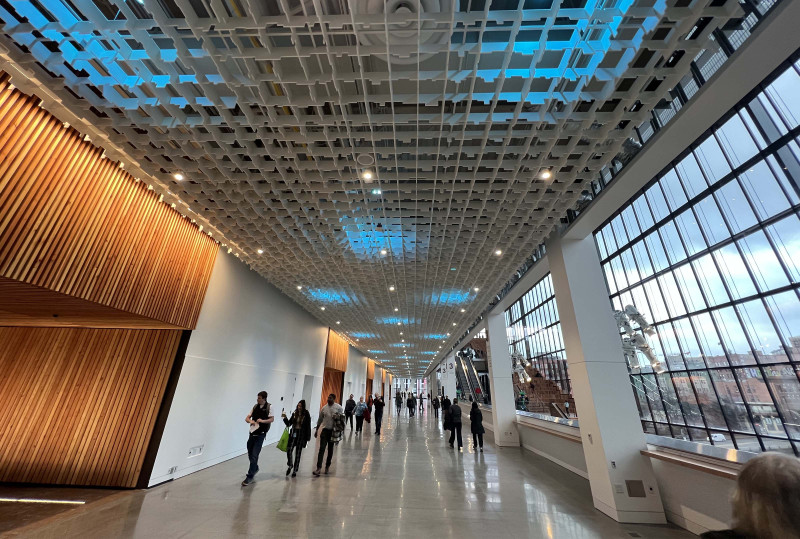
“Seattle Convention Center” Seattle, WA, LMN Architects. Photo courtesy of Chris West.
To recap, when it comes to managing sound, there are key differences between soundproofing and sound absorption. Soundproofing is designed to block sound, making it ideal for spaces requiring complete isolation, while sound absorption focuses on reducing sound reflections. Soundproofing typically involves heavy materials to prevent sound from passing through, whereas sound absorption utilizes porous materials to dampen sound waves.
In commercial spaces, sound absorption is often more practical than soundproofing as it helps to improve acoustics by reducing echoes and improving overall sound quality without requiring complete isolation. This makes sound absorption a more versatile solution for various commercial environments, such as offices, restaurants, and auditoriums, where creating an optimal acoustic environment is essential.
Conclusion
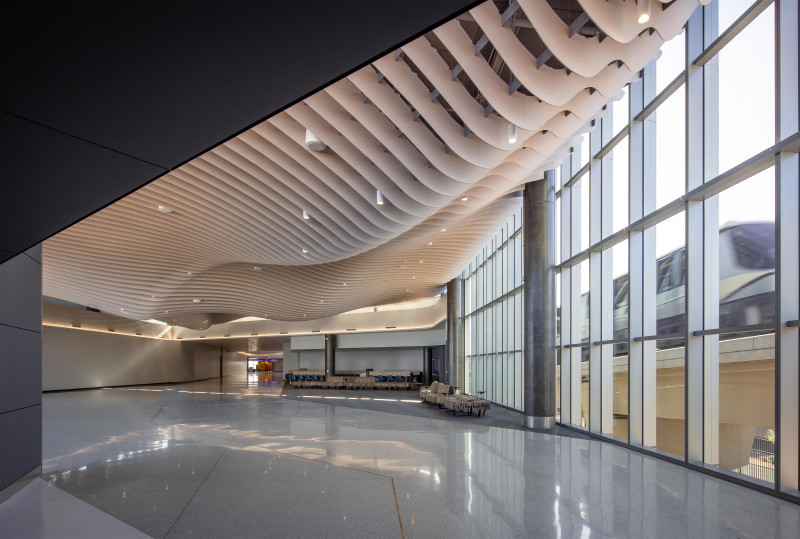
“Phoenix Sky Harbor” Phoenix, AZ, Corgan. Photo by Kurt Griesbach.
Commercial spaces free of excess noise and distracting sounds are beneficial to everyone at large. This means focused employees working in quiet conditions for offices and retail stores. For restaurants and hotels, this can lead to happier patrons who wish to stay for longer and return in the future.
Effectively managing sound in any space is crucial for creating a comfortable and productive environment. Understanding the differences between soundproofing and sound absorption is essential in determining the most suitable approach for your needs.
If you’re ready to enhance the acoustic quality of your commercial space, contact an Arktura Rep to get started on managing excess sound with our innovative acoustics solutions.
